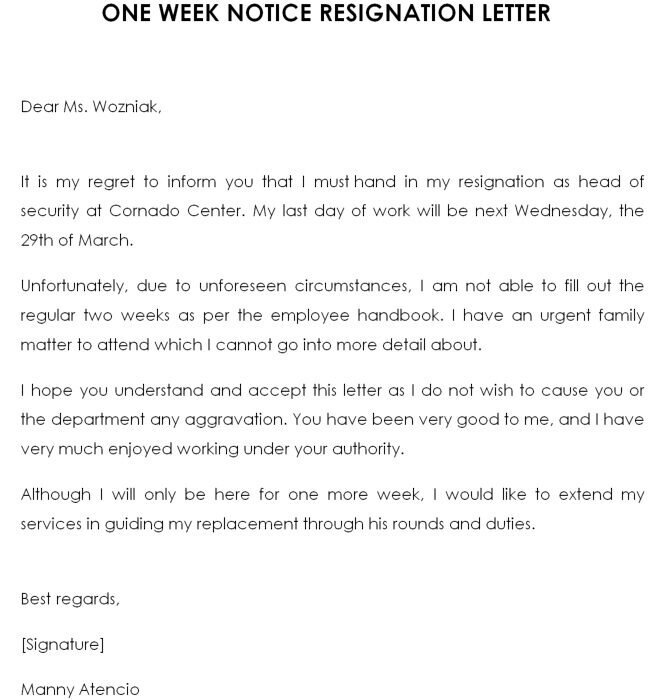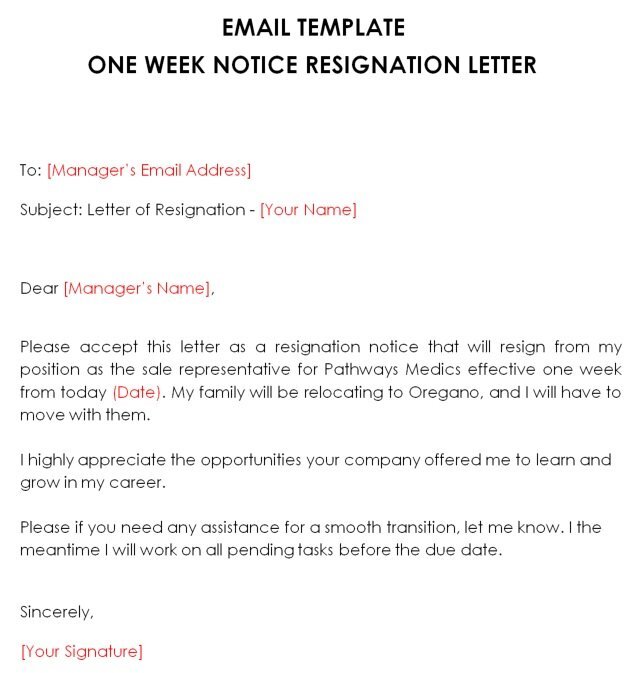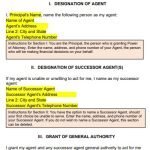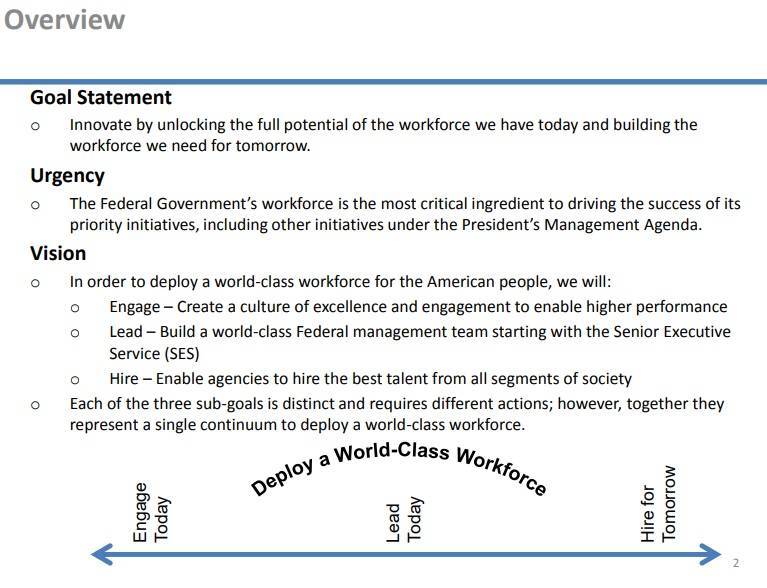Resigning from a job with a one week notice resignation letter requires careful consideration, professionalism, and proper communication. While standard resignation periods typically span two weeks or more, circumstances sometimes necessitate a shorter timeline. This comprehensive guide will walk you through crafting an effective one-week notice resignation letter, understanding your rights, and managing this sensitive transition professionally.
Understanding One Week Notice Resignations
Legal Considerations
Before drafting your resignation letter, it’s crucial to understand your legal obligations. While most employment in the United States is “at-will,” meaning either party can terminate the relationship at any time, your specific situation may be governed by:
- Employment contracts
- Union agreements
- State-specific labor laws
- Company policies
According to the U.S. Department of Labor, there’s no federal law requiring employees to give any specific notice period before resigning. However, maintaining professional relationships often warrants providing appropriate notice when possible.
When Is One Week Notice Appropriate?
Several situations might justify giving shorter notice:
- Personal Emergencies
- Family crisis
- Health issues
- Sudden relocation needs
- Professional Circumstances
- Hostile work environment
- Ethical concerns
- Immediate start date at new position
- Company restructuring
- Industry-Specific Situations
- Contract work completion
- Project-based employment
- Seasonal positions
Essential Components of a One Week Notice Letter
Basic Structure
Your resignation letter should maintain a professional tone while including these key elements:
- Header Information
- Your name and contact details
- Date
- Recipient’s name and title
- Company address
- Formal Salutation
- Address the appropriate supervisor or HR representative
- Use professional titles when applicable
- Opening Statement
- Clear intention to resign
- Specific last working day
- Current position title
- Body Content
- Brief explanation (if appropriate)
- Transition plan
- Expression of gratitude
- Offer of assistance
- Professional Closing
- Formal signature
- Contact information
- Date
Professional Transition Strategies
Preparing Documentation
Create comprehensive documentation including:
- Current Projects
- Status updates
- Deadlines
- Key contacts
- Required resources
- Daily Responsibilities
- Step-by-step procedures
- Access information
- Regular deadlines
- Important contacts
- Knowledge Transfer
- Technical documentation
- Process workflows
- Client information
- Team protocols
Managing Relationships
With Supervisors
- Schedule a face-to-face meeting
- Maintain professional communication
- Offer constructive feedback if requested
- Express genuine gratitude
With Colleagues
- Inform key team members personally
- Share relevant contact information
- Complete collaborative projects
- Transfer knowledge effectively
With Clients/Stakeholders
- Notify essential contacts
- Introduce replacement contact
- Ensure smooth handover
- Maintain professional relationships
Digital Exit Strategy
Organizing Electronic Files
- Email Management
- Set up auto-replies
- Archive important communications
- Transfer relevant emails
- Update contact information
- Document Organization
- Organize shared drives
- Label files clearly
- Update access permissions
- Create index documents
- System Access
- List all login credentials
- Document system access
- Prepare for handover
- Schedule account deactivation
Legal and Professional Considerations
Review Important Documents
- Employment Contract
- Notice period requirements
- Non-compete clauses
- Confidentiality agreements
- Intellectual property rights
- Company Policies
- Exit procedures
- Final paycheck timing
- Benefits continuation
- Company property return
- Project Agreements
- Completion requirements
- Transfer protocols
- Client commitments
- Handover documentation
Common Challenges and Solutions
Managing Short Notice
- Prioritizing Tasks
- Focus on critical projects
- Delegate where possible
- Create detailed handover notes
- Identify immediate priorities
- Communication Strategies
- Be clear and direct
- Remain professional
- Address concerns promptly
- Maintain open dialogue
Handling Potential Pushback
- From Management
- Stay firm but professional
- Reference any legitimate constraints
- Offer reasonable compromises
- Document all communications
- From Colleagues
- Explain situation briefly
- Focus on positive aspects
- Maintain boundaries
- Keep relationships intact
Best Practices for Exit Interviews
Preparation Tips
- Review Key Points
- Career highlights
- Professional growth
- Constructive feedback
- Future recommendations
- Professional Approach
- Stay positive
- Be honest but tactful
- Focus on improvements
- Maintain professionalism
Post-Resignation Considerations
Maintaining Professional Networks
- LinkedIn Updates
- Update profile appropriately
- Connect with colleagues
- Maintain professional presence
- Share contact information
- Professional References
- Secure reference agreements
- Document achievements
- Maintain contact information
- Express gratitude
Future Career Implications
Managing Your Professional Reputation
- Reference Considerations
- Maintain positive relationships
- Document achievements
- Secure recommendations
- Keep contact information current
- Industry Network
- Preserve professional connections
- Maintain communication channels
- Stay engaged in industry events
- Continue professional development
one week notice resignation letter
one week notice letter
email template for one week notice resignation letter
Frequently Asked Questions
While employers cannot force you to stay, they may note it in your employment record or affect future references. Review your employment contract for specific requirements.
Generally, it’s not necessary to include details about your new position unless it’s relevant to the transition period.
This can happen – ensure you understand your rights regarding final pay and benefits. Document all communications and follow up in writing.
Include enough detail for someone to understand and continue your essential duties. Focus on critical processes, contacts, and ongoing projects.
Both methods are acceptable. Email provides immediate delivery and timestamp, while a hard copy adds formality. Consider your company culture and relationship with management.

















